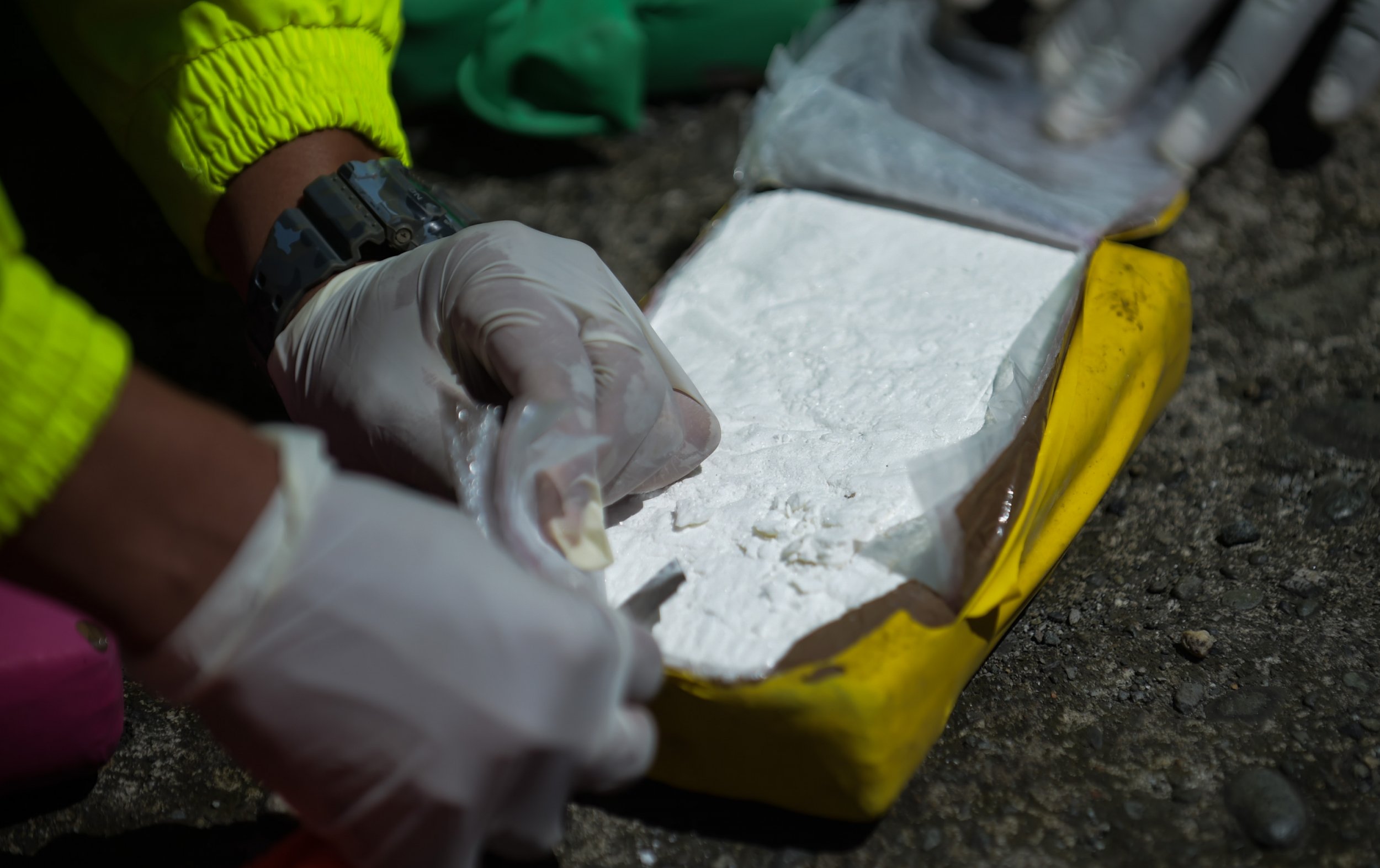
The opioid crisis in America has received considerable attention in recent weeks, including a Newsweek 's report on the Veteran Affairs' role in the death of thousands of veterans after overprescribing opiates and psychiatric medications for more than a decade.
But another problem is on the rise. A report by the Drug Enforcement Administration (DEA) released on Monday indicates that cocaine use and availability in the United States are rebounding, with several domestic cocaine data sets outpacing 2007 benchmark levels. The new findings are in correlation with the fact that Colombia is witnessing a staggering increase in coca production, which makes the South American nation the primary supplier of cocaine in the U.S.
Cocaine use in the U.S. has increased between 2015 and 2016 as more traffickers want to invest in the domestic market, the report states. Colombia has been the world's largest producer of coca since the mid-1990s and continues to be the source of the cocaine seized in U.S. territory, with 92 percent of cocaine samples confiscated last year. Six percent were of Peruvian origin and two percent were of an unknown point of departure, the report shows.
According to the U.S. Customs and Border Protection, drug seizures along the U.S.-Mexico border declined between 2011 and 2015, but other border sectors and maritime borders have seen a considerable rise in illicit trade, Business Insider reported. For instance, the U.S. Coast Guard seized more than 416,000 pounds in 2016, up from its previous record of 367,000 pounds in 2008, the same publication said.
Coca production is unlikely to dwindle due to increased coca farmer profits, and the DEA forecasts that Colombia's coca cultivation will expand this year. "Average farmer profits increased more than 120 percent between 2012 and 2016," the report underscores. "A Colombian coca farmer tending a mature quarter-hectare field realized some $1,200 in profits in 2016. This rise in potential profits provides the coca farmers with a strong economic incentive to grow more coca."
The rise in coca production has been flagged in recent months. According to The Guardian, a White House report in March found that coca cultivation in Colombia increased 18 percent in 2016 from 2015, and officials estimated 188,000 hectares of Colombian soil being used for coca crops, the highest since 1994. Because of this surge in coca cultivation, President Donald Trump threatened to decertify Colombia as a partner in the war on drugs unless stricter measures were taken to curb the production.
The increase occurred in the midst of a peace treaty between the Revolutionary Armed Forces of Colombia (FARC) and the Colombian government in November 2016, which required that the rebel group would end any involvement in the illicit trade. However, it remains to be seen whether the peace process will have long-term implications for the country's drug trade, the report shows. FARC controlled a large swath of the coca-rich regions until they disarmed and became a political party this year.
As coca production continues to increase, the U.S. is likely to see more deaths related to cocaine consumption, the DEA says. In recent years, cocaine use has wreaked havoc in the U.S. once again. In 2015, for example, the National Survey on Drug Use and Health (NSDUH) found that 1.9 million people aged 12 or older are currently cocaine users, a significant increase from the 2007 benchmark of 906,000 users, the DEA cites.
According to the National Institute on Drug Abuse, overdose deaths involving cocaine only has increased from 4,000 in 2010 to 7,000 in 2015, the second highest rate since 2006. Between 2010 and 2015, deaths involving both cocaine and opioids have more than doubled, from 2,000 to over 4,000.
Another report from the Centers for Disease Control found that cocaine was the second cause of overdose deaths in 2014, with 5,856 cases. Heroin topped the list with 10,863 deaths, U.S. News said.
Uncommon Knowledge
Newsweek is committed to challenging conventional wisdom and finding connections in the search for common ground.
Newsweek is committed to challenging conventional wisdom and finding connections in the search for common ground.
About the writer
Robert Valencia is deputy world editor for Newsweek. Robert has covered issues related to drug policy, human rights, U.S. presidential ... Read more
To read how Newsweek uses AI as a newsroom tool, Click here.








